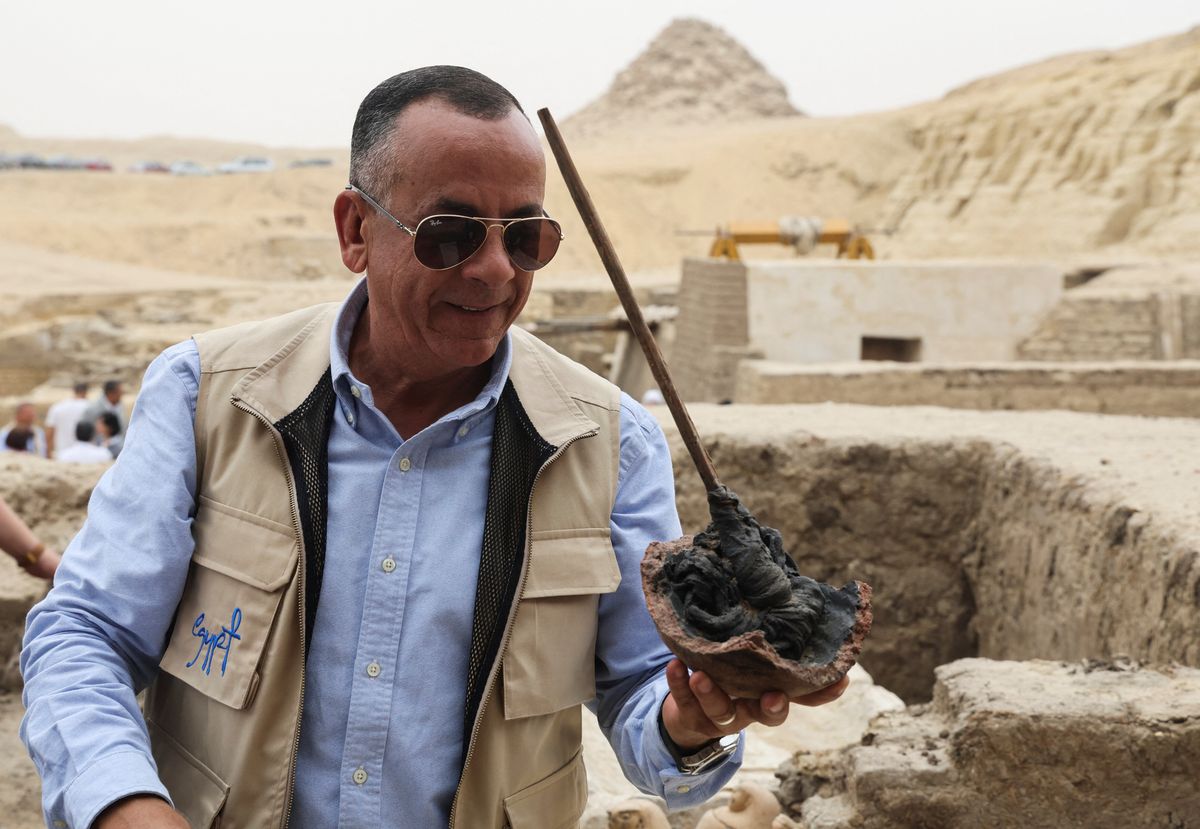Ancient Egyptian mummification workshops and tombs discovered
In Egyptian history, mummification was used to preserve bodies as the spirit moves on to the afterlife.

A few minutes every morning is all you need.
Stay up to date on the world's Headlines and Human Stories. It's fun, it's factual, it's fluff-free.
The backstory: Egypt’s tourism sector got beaten down pretty badly by the COVID pandemic, political unrest and the ongoing war in Ukraine. So, it’s been pushing for more archeology projects across the country in hopes of boosting tourism back up. The country’s also been building a huge, modern facility that will become the Grand Egyptian Museum near the pyramids of Giza. That project should be finished later this year.
In Egyptian history, mummification was used to preserve bodies as the spirit moves on to the afterlife, so finding mummies allows us a really good look at people (and animals) of the past. In 2019, archaeologists unearthed hundreds of mummified animals and statues in the ancient burial grounds of Saqqara, which are just a little south of Cairo. For the past year, another one of these excavation projects has been ongoing near the sanctuary of the goddess Bastet and the catacombs of mummified cats in Saqqara.
The development: On Saturday, Egyptian officials announced that archeologist teams had discovered both human and animal mummification workshops, plus two small tombs of priests, on the Saqqara grounds. These workshops are from the 30th dynasty (380-343 BC) and the Ptolemaic (305-30 BC) times.
Inside, researchers found stony beds where bodies were laid out to be mummified, clay pots for holding organs and other ritual vessels. The first tomb is for Ne Hesut Ba, from the Old Kingdom's fifth dynasty, and has walls showing pictures of hunting and daily life. And, the second tomb, for Men Kheber from the late kingdom's 18th dynasty, has walls decorated with "scenes showing the deceased in different positions,” officials say.
Key comments:
"We found embalming workshops, one for humans and one for animals. We found all the tools that they used (in mummification) in ancient times," Mostafa Waziri, the head of Egypt's Supreme Council of Antiquities, told reporters.
“We discovered the biggest embalming – we call it house – or workshop, one for humans and one for animals,” Waziri also said.




Comments ()